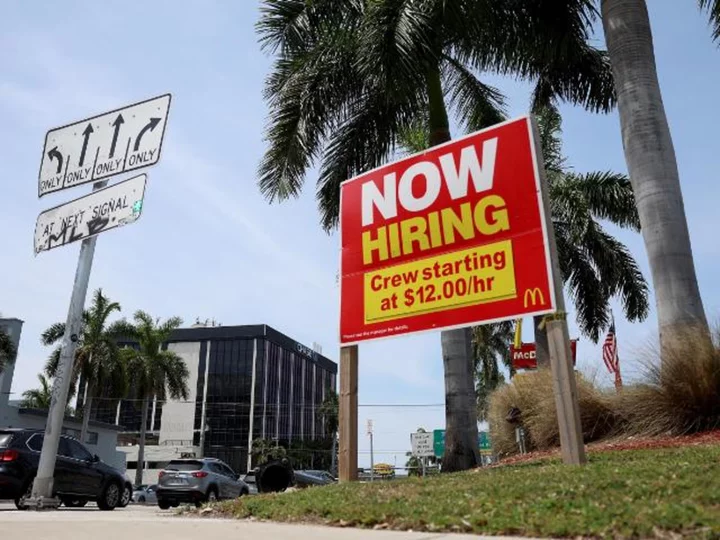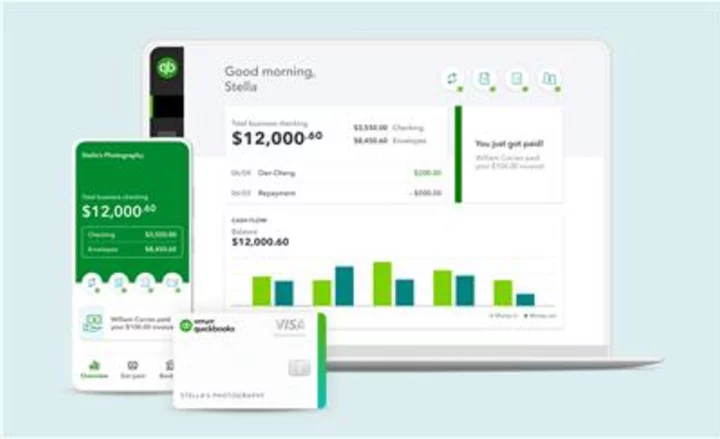Just one day before Friday's key monthly jobs report from the Bureau of Labor Statistics, private payroll processor ADP reported a massive, unexpected spike in hiring activity in June.
ADP's National Employment Report, produced in a collaboration with the Stanford Digital Economy Lab, showed that the private sector added 497,000 jobs last month, far exceeding economists' expectations for 228,000 jobs and ADP's May total of 267,000 hires.
While ADP's tabulations don't always correlate with the official federal jobs report, set to be released at 8:30 a.m. ET Friday, it's sometimes viewed as a proxy for overall hiring activity. And by that measure, Thursday's blockbuster jump is yet another indicator that the June jobs report is all but certain to show that the US labor market has added jobs for 30 consecutive months.
While the current employment growth pales in comparison to the labor market expansion seen between 2010 and 2019, when there were a record 100 months of job growth, it's the strength of this current streak that continues to defy expectations: The above-average gains come at a time of elevated, but waning, inflation as well as a historic spike in interest rates resulting from a Federal Reserve counteroffensive to rising prices.
The 1.57 million jobs added so far this year mark the 10th highest January-to-May total in records that go back to 1939, BLS data shows. And this year's monthly average of 314,000 net job gains far exceeds what was seen before the pandemic, including during that 100-month stretch post-Great Recession.
Still, some economists believe that it's only a matter of time before the weight of those and other external factors will be too much for employers to handle.
Sarah House, senior economist at Wells Fargo, said she's expecting a "gradual cooling" to wash over the labor market.
"The jobs market is not collapsing," she said. "But as we get further away from the [pandemic] reopening, the impact of tighter monetary policy increasingly bites. We do look for the job gains to continue to ease on trend."
Economists expect that June's job gains will be lower than that average and also down from the 339,000 jobs added in May. Consensus estimates are for a net gain of 225,000 jobs last month, according to Refinitiv. (Nevertheless, the 82 forecasts from economists that make up that consensus vary widely — from 110,000 to 288,000 jobs).
The unemployment rate is expected to dip to 3.6% from 3.7%, according to the Refinitiv estimates, which range from 3.4% to 3.8%.
A data-heavy week
The timing of the Fourth of July holiday resulted in a load of labor market data landing within 24 hours of the government's monthly jobs report. During typical months, reports such as the BLS' Job Openings and Labor Turnover Survey (JOLTS) and payroll processor ADP's private-sector payrolls survey are released on Tuesdays and Wednesdays, respectively, giving economists and the markets time to digest key indicators.
Instead, ADP released its report minutes before the weekly jobless claims were published. JOLTS was released 90 minutes thereafter.
Consensus estimates for ADP's report were for 228,000 net job gains in the private sector during June, according to Refinitiv estimates, which have an even wilder range of 95,000 to 334,000 jobs. The actual tally for June of 497,000 jobs added, however, blew those estimates out of the water.
The bulk of the gains came from service industries, specifically leisure and hospitality businesses, according to ADP. However, there are indications that hiring activity may be peaking, noted Nela Richardson, ADP's chief economist.
"Wage growth continues to ebb in these same industries, and hiring likely is cresting after a late-cycle surge," she said in a statement.
For JOLTS, May job openings fell to 9.82 million, dropping from an upwardly revised 10.3 million in April, according to the BLS.
The May JOLTS data showed that the number of new hires rose to 6.21 million from 6.1 million, quits jumped up to 4.02 million from 3.77 million and layoffs dipped to 1.56 million from 1.59 million.
Job cuts dip in June
Weekly jobless claims increased to 248,000 for the week ended July 1, the Department of Labor reported Thursday.
Although the weekly claims data is highly volatile and frequently revised, the four-week average has trended up in recent weeks, providing another indication of softening in the labor market.
Mass layoff announcements — primarily from large tech firms recalibrating after the pandemic boom — have peppered the headlines during the past several months. However, overall jobless claims have edged up only slightly, and have remained below pre-pandemic averages.
And those job losses have come in fits and starts.
US employers announced 40,709 job cuts in June, the lowest monthly total since October 2022, according to data released Thursday morning by outplacement firm Challenger, Gray & Christmas.
Still, excluding the deep job losses seen in 2020, the 458,209 layoff total announced in the first half of this year is the highest January to June total since 2009, when 896,675 cuts were announced, according to the Challenger Report for June. The technology industry continues to account for the lion's share of the cuts.
"The drop in cuts is not unusual for the summer months; in fact, June is historically the slowest month on average for announcements," Andy Challenger, senior vice president of Challenger, Gray & Christmas, said in a statement. "It is also possible that the deep job losses predicted due to inflation and interest rates will not come to pass, particularly as the Fed holds rates."
Unexpected blip or rising unemployment?
The nation's jobless rate spiked in May, jumping to 3.7% from 3.4%. The sudden and sharp increase in the unemployment rate was largely unexpected — especially considering the strong job gains.
The monthly jobs report is composed of two surveys to measure employment levels and activity: one that surveys businesses about employment, hours and earnings; and the other of households to obtain the labor force status of the population with demographic details. The unemployment rate comes from the latter, which is often considered to be volatile because of a smaller sample size.
While some economists highlighted the divergence between the two surveys in May — household employment notably fell by 310,000 jobs — others say it might not be a one-month blip.
"It likely ticked higher in June to 3.9% with the entry of recent college graduates to the jobs market and slowing reemployment among workers who were recently laid off," Aaron Terrazas, Glassdoor's chief economist, said in commentary issued last week. "If this occurs, the unemployment rate will have increased 0.5 percentage points in two months — an important benchmark for many economists."
Labor hoarding and a soft landing
Recent job market data shows that more businesses are "labor hoarding" by maintaining headcounts in spite of softening demand. Driving that in part are severe worker shortages experienced during the pandemic recovery as well as a broader demographic shift of the Baby Boomer generation aging out of the workforce, House said.
Given that, she said, "we do think that businesses will be a little bit more reluctant to let workers go."
And that helps the argument that the post-pandemic economy could achieve a soft landing — a reduction in inflation without a large loss of employment or triggering of a recession, she said.
"The intention might be to keep workers on, come what may, but when push comes to shove, their finances might dictate otherwise," she said.









